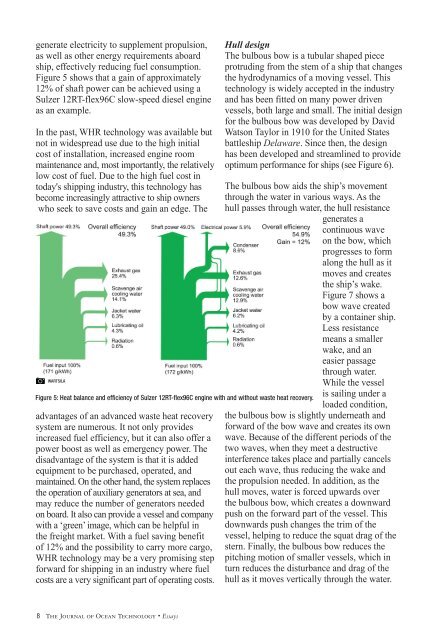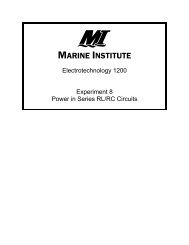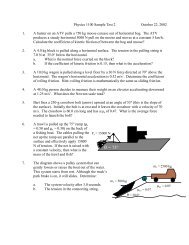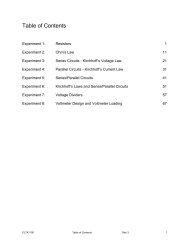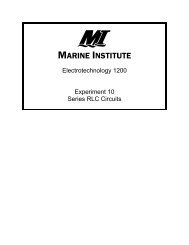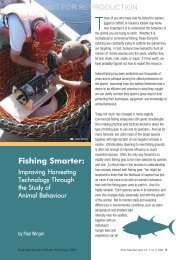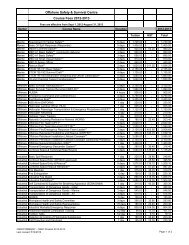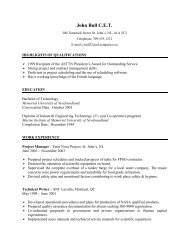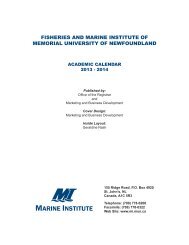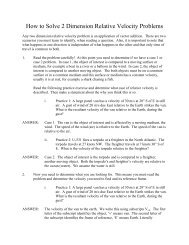Hybrid Marine Propulsion on the Tugboat Carolyn Dorothy
Hybrid Marine Propulsion on the Tugboat Carolyn Dorothy
Hybrid Marine Propulsion on the Tugboat Carolyn Dorothy
You also want an ePaper? Increase the reach of your titles
YUMPU automatically turns print PDFs into web optimized ePapers that Google loves.
generate electricity to supplement propulsi<strong>on</strong>,<br />
as well as o<strong>the</strong>r energy requirements aboard<br />
ship, effectively reducing fuel c<strong>on</strong>sumpti<strong>on</strong>.<br />
Figure 5 shows that a gain of approximately<br />
12% of shaft power can be achieved using a<br />
Sulzer 12RT-flex96C slow-speed diesel engine<br />
as an example.<br />
In <strong>the</strong> past, WHR technology was available but<br />
not in widespread use due to <strong>the</strong> high initial<br />
cost of installati<strong>on</strong>, increased engine room<br />
maintenance and, most importantly, <strong>the</strong> relatively<br />
low cost of fuel. Due to <strong>the</strong> high fuel cost in<br />
today's shipping industry, this technology has<br />
become increasingly attractive to ship owners<br />
who seek to save costs and gain an edge. The<br />
Wartsila<br />
advantages of an advanced waste heat recovery<br />
system are numerous. It not <strong>on</strong>ly provides<br />
increased fuel efficiency, but it can also offer a<br />
power boost as well as emergency power. The<br />
disadvantage of <strong>the</strong> system is that it is added<br />
equipment to be purchased, operated, and<br />
maintained. On <strong>the</strong> o<strong>the</strong>r hand, <strong>the</strong> system replaces<br />
<strong>the</strong> operati<strong>on</strong> of auxiliary generators at sea, and<br />
may reduce <strong>the</strong> number of generators needed<br />
<strong>on</strong> board. It also can provide a vessel and company<br />
with a ‘green’ image, which can be helpful in<br />
<strong>the</strong> freight market. With a fuel saving benefit<br />
of 12% and <strong>the</strong> possibility to carry more cargo,<br />
WHR technology may be a very promising step<br />
forward for shipping in an industry where fuel<br />
costs are a very significant part of operating costs.<br />
Hull design<br />
The bulbous bow is a tubular shaped piece<br />
protruding from <strong>the</strong> stem of a ship that changes<br />
<strong>the</strong> hydrodynamics of a moving vessel. This<br />
technology is widely accepted in <strong>the</strong> industry<br />
and has been fitted <strong>on</strong> many power driven<br />
vessels, both large and small. The initial design<br />
for <strong>the</strong> bulbous bow was developed by David<br />
Wats<strong>on</strong> Taylor in 1910 for <strong>the</strong> United States<br />
battleship Delaware. Since <strong>the</strong>n, <strong>the</strong> design<br />
has been developed and streamlined to provide<br />
optimum performance for ships (see Figure 6).<br />
The bulbous bow aids <strong>the</strong> ship’s movement<br />
through <strong>the</strong> water in various ways. As <strong>the</strong><br />
hull passes through water, <strong>the</strong> hull resistance<br />
generates a<br />
c<strong>on</strong>tinuous wave<br />
<strong>on</strong> <strong>the</strong> bow, which<br />
progresses to form<br />
al<strong>on</strong>g <strong>the</strong> hull as it<br />
moves and creates<br />
<strong>the</strong> ship’s wake.<br />
Figure 7 shows a<br />
bow wave created<br />
by a c<strong>on</strong>tainer ship.<br />
Less resistance<br />
means a smaller<br />
wake, and an<br />
easier passage<br />
through water.<br />
While <strong>the</strong> vessel<br />
is sailing under a<br />
loaded c<strong>on</strong>diti<strong>on</strong>,<br />
<strong>the</strong> bulbous bow is slightly underneath and<br />
forward of <strong>the</strong> bow wave and creates its own<br />
wave. Because of <strong>the</strong> different periods of <strong>the</strong><br />
two waves, when <strong>the</strong>y meet a destructive<br />
interference takes place and partially cancels<br />
out each wave, thus reducing <strong>the</strong> wake and<br />
<strong>the</strong> propulsi<strong>on</strong> needed. In additi<strong>on</strong>, as <strong>the</strong><br />
hull moves, water is forced upwards over<br />
<strong>the</strong> bulbous bow, which creates a downward<br />
push <strong>on</strong> <strong>the</strong> forward part of <strong>the</strong> vessel. This<br />
downwards push changes <strong>the</strong> trim of <strong>the</strong><br />
vessel, helping to reduce <strong>the</strong> squat drag of <strong>the</strong><br />
stern. Finally, <strong>the</strong> bulbous bow reduces <strong>the</strong><br />
pitching moti<strong>on</strong> of smaller vessels, which in<br />
turn reduces <strong>the</strong> disturbance and drag of <strong>the</strong><br />
hull as it moves vertically through <strong>the</strong> water.<br />
Figure 5: Heat balance and efficiency of Sulzer 12RT-flex96C engine with and without waste heat recovery.<br />
8 The Journal of Ocean Technology • Essays


